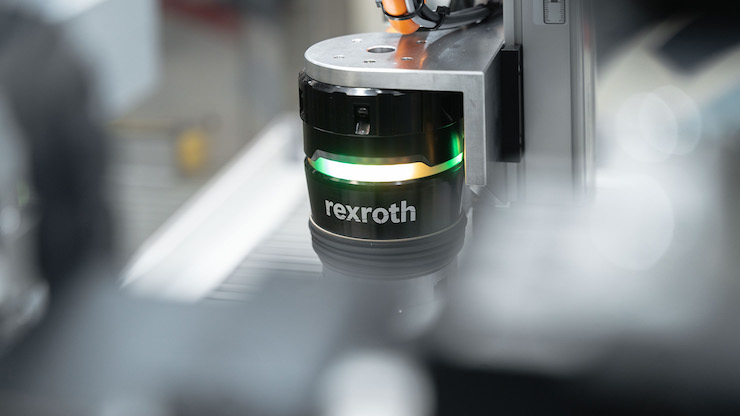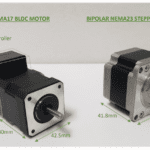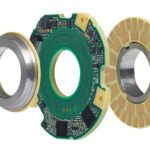Smart mechatronics technology is being applied in a variety of industries, where the benefits include increased efficiency, improved accuracy, and enhanced productivity.
Brad Klippstein
Product manager for smart mechatronics
Bosch Rexroth
In recent years, smart mechatronics applications have become increasingly common in various industries. Smart mechatronics refer to the combination of mechanical engineering, electrical engineering, and computer science to create intelligent systems that can interact with the environment and make decisions based on real-time data. This technology has proven to be effective in improving the efficiency and effectiveness of many industrial processes. Here’s a look at five applications where smart mechatronics make sense.
Battery and electric vehicle manufacturing
The increasing demand for electric vehicles (EVs) has led to a surge in research and development of smart mechatronics in the battery and EV industry. Smart mechatronics technology is being used to improve the performance and reliability of battery packs, which is critical for the widespread adoption of EVs. There are a multitude of use cases within battery and EV manufacturing where smart mechatronics are necessary.
Within the EV manufacturing process, assembling battery covers and windshields requires accurate dispensing of sealants and thermal materials which is done efficiently with a smart dispensing system. Using precise dispensing technology, manufacturers can control the flow rate through the dispensing head along with the cartesian motion profile to create an accurate, repeatable process.

Smart handling or pressing systems can simplify battery production by automating precise steps in production such as picking up battery cells, press fitting the caps on cylindrical cells, or pressing the casing onto the packs themselves, all while providing a continuous feedback loop. In sorting and cell testing, a smart mechatronic handling system is beneficial because it automates the process and provides real-time feedback. Easy commissioning and intuitive programming commands allow users to generate complex pick-and-place cycles in minutes.
Recent innovations such as the Bosch Rexroth Smart Flex Effector can provide increased precision to battery automation processes with pouch, cylindrical and prismatic type battery cells. The smart flex effector can also be used to guide collaborative robots in welding or cabling applications by providing the robot controller with continuous positional deviation commands to maintain accurate motion paths. By measuring the position deviation of the gripping device in relation to the workpiece in six degrees of freedom, the robot can adjust its position to ensure accurate placement. Smart mechatronics technology improves precision and increases the overall efficiency of battery and electric vehicle manufacturing processes.
Consumer packaged goods
Consumer packaged goods (CPG) manufacturers are always looking for ways to increase their flexibility, maximize the use of space, and minimize the time and effort required to modify or add new production tools. Plug-and-produce smart mechatronics systems are designed to meet these needs by combining established linear motion components with smart controls and easy-to-use engineering tools.
By using these systems, CPG manufacturers can benefit from accelerated engineering, commissioning, and faster time to market for their products. These systems also provide more transparent, efficient, and reliable production processes. Smart mechatronics systems offer high operating performance and sustainability through permanent updates, ensuring that manufacturers always have access to the latest technology and capabilities. Handling systems, such as the Smart Function Kit for Handling, are an example of how smart mechatronics technology can improve the accuracy of packaging, create a repeatable process, and increase production speeds in palletizing operations. These systems can also monitor the quality of products in real-time, allowing manufacturers to identify and address any issues quickly. Open interfaces allow software engineers the ability to customize the operator interface and collect system data to increase throughput and efficiency of the operation.

One of the largest challenges in CPG operations is efficient product changeover. Most manufacturers offer multiple sizes of a single product, each with their own packaging designed for that specific size. To switch production from a 12-inch package to a 6-inch package, traditionally, a manufacturer would have to pause production and reset the line to accommodate the new handling requirements of the smaller package. Advancements in smart mechatronics are helping to tackle this challenge head on with sensor-based innovations that can sense the size of a bag and automatically adjust the handling system for the exact product it needs to grab.
Smart mechatronics also play a critical role in improving ease of use for factory operations. For example, a simple Galaxy Note touchpad or an iPad can program smart mechatronics. This plug-and-play mentality eliminates the need for operators to receive specialized training, so manufacturers do not have to hire somebody with a robotics programming background to run the line. As an added benefit, the plug-and-play mentality also saves space in the production line, because a large electrical control cabinet is no longer needed to manage the robotics.
Overall, smart mechatronics systems offer CPG manufacturers an optimal solution for enhancing their production capabilities with minimum effort and maximum results.
Maintaining accuracy in the semiconductor industry
Smart mechatronics is playing an increasingly significant role in the semiconductor industry. Within semiconductor manufacturing, even the slightest vibration when wafers are in motion can compromise chip quality – requiring precise and accurate automated manufacturing processes. Smart mechatronics technology can help achieve this. These smart systems are being used to improve the accuracy and precision of semiconductor manufacturing equipment, reducing defects, and improving product quality.
Specifically, sensor-based compensation units, like the Smart Flex Effector, ensure accuracy of linear motion devices with high-resolution sensors, which are then translated into active correction movements. This tactile sensor can enhance the accuracy of automation systems used for wafer handling and processing, while also providing a digital twin throughout the process. This smart device can also incorporate in-process metrology to robotic applications, enhancing currently existing equipment used throughout the industry. Incorporating smart mechatronics systems is critical to meeting the ever-increasing demand for precision in the semiconductor industry, enabling greater productivity and quality control.

Smart Logistics
Intralogistics is the process of managing and optimizing the internal flow of goods in a warehouse or distribution center. Smart mechatronics technology is being used in intralogistics to improve the efficiency of these processes. Smart mechatronics systems can automate material handling, sorting, and transporting processes, reducing the need for manual labor, and increasing the speed of operations. Specific smart technology such as the Smart Flex Effector can be used with collaborative robots to increase accuracy of linear motion devices and pick-and-place operations. Smart handling systems can be commissioned and monitored easily and can provide greater efficiency in palletizing operations. These systems can also help digitalize the value stream through software-based commissioning and monitoring, and even creating digital twins for a streamlined process, allowing for better management of the supply chain.
Medical laboratories
Smart mechatronics has been playing an increasing role in the medical device industry, especially in areas such as cartesian pick-and-place operations and sorting operations. One notable application of smart mechatronics in this industry is the use of pick-and-place robots and cartesian systems for sorting test tubes. In medical laboratories, pick-and-place robots equipped with cameras and sensors are used to sort test tubes based on specific criteria such as sample type, patient ID, or test required. These robots can quickly and accurately sort large quantities of test tubes, reducing errors and minimizing the risk of contamination. Overall, smart mechatronics is a rapidly advancing field that is revolutionizing the way we approach medical device design and manufacturing.
Bosch Rexroth
www.boschrexroth-us.com





Leave a Reply
You must be logged in to post a comment.